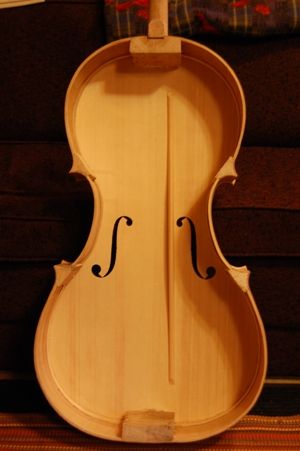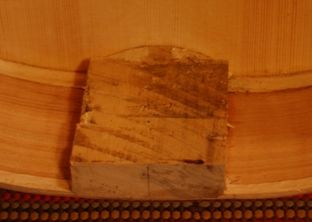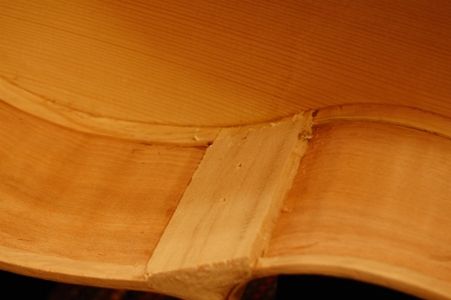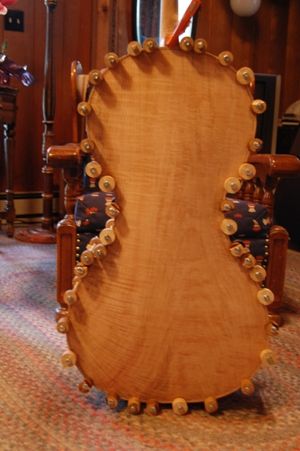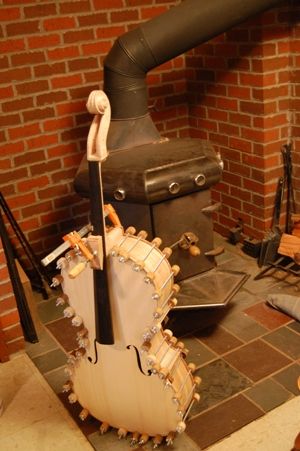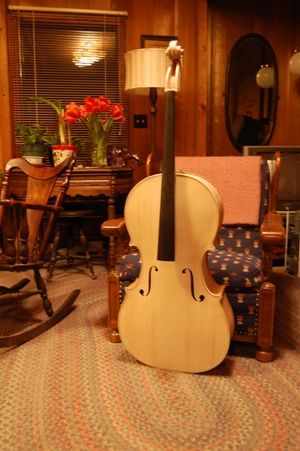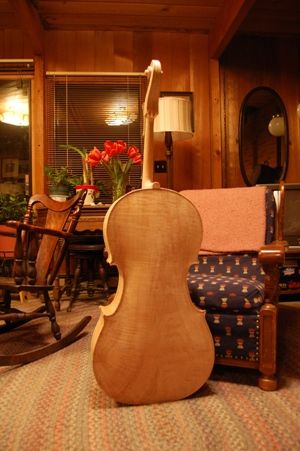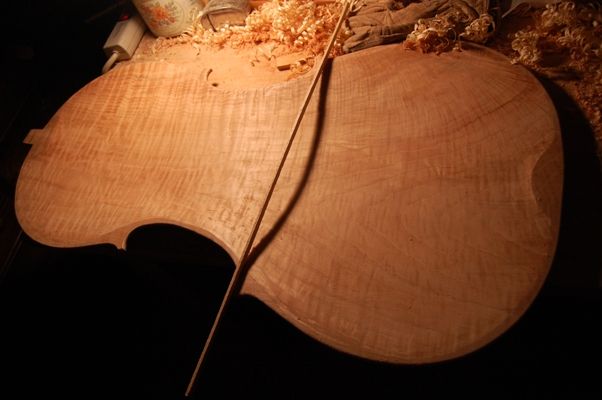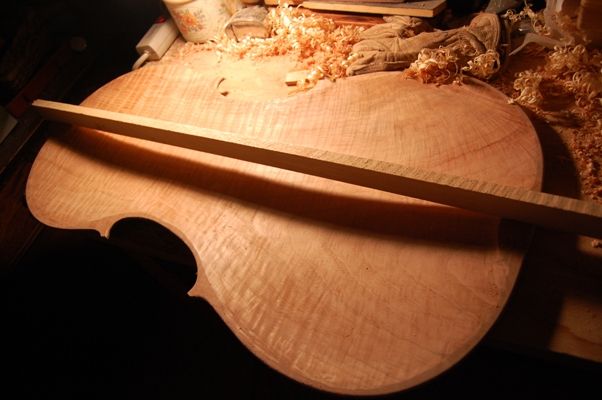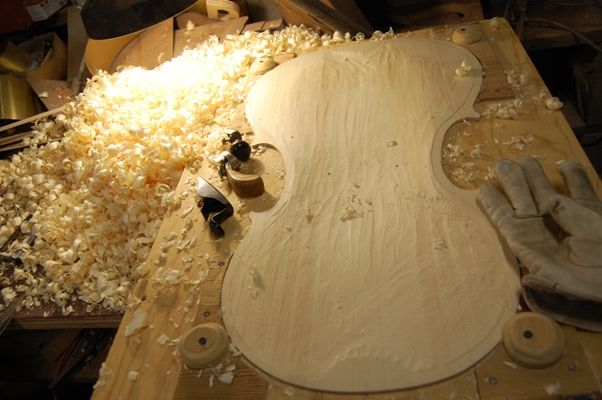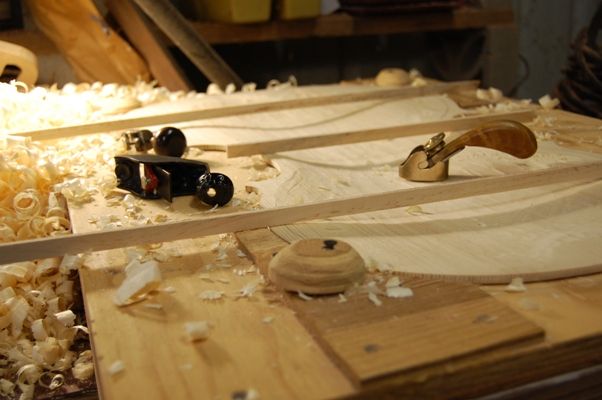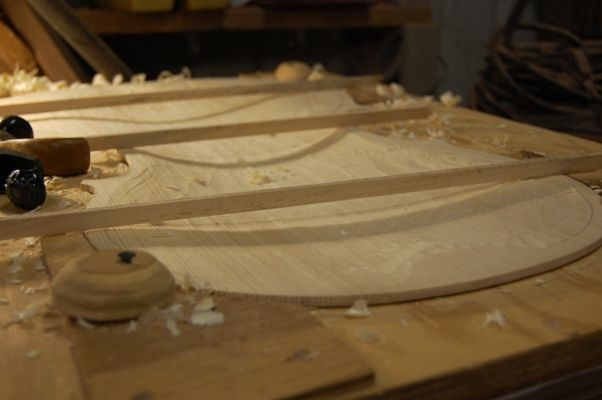Two Plates
Top Plates First
Not every violin maker follows exactly the same path. I not only make my front plates first; I install the front plate before I install the purfling…and install the neck and fingerboard before removing the form (or mold.) After removing the mold and leveling the back of the garland, including the neck-heel, I can install the back plate.
I used to install purfling before installing the plates, too, because I was taught to do it that way. But I consistently had trouble with the plate overhang not being even, around the perimeter of the instrument, and it finally occurred to me to try doing the purfling after installing the plates, and after having established the final shape of the plates, so that the purfling followed the final edge of the plate, rather than installing the purfling first, and later finding that the garland has changed shape slightly, so that the plate no longer fits perfectly, and I have no option to modify the plate, because the purfling has permanently determined where the edge is supposed to be. Ah, well…I am just a slow learner, I guess. 🙂
So, here is a sort of “after and before” picture: the one on the right has been arched close enough to correctly, that I will be ready lay out and incise the f-holes next. The one on the right has only been traced and cut out, so all the carving remains to be done.

Arching the Top Plates
I derived my arching-plan from the “The Strad” magazine posters. On this particular pair of posters, there are not only the traditional photos and line drawings, but they actually printed out CT scan images so that one can see exactly the shape and thickness of all parts of the violins.
I first mark the edges at 4mm thickness, then plane down to the lines. Most makers use gouges for this part, but I prefer small finger planes. I am sure that there are many good reasons to use the gouges instead, not the least of which would be speed in making, and I have certainly carved plates that way…but I prefer the planes. So, here is the carving of the second plate:
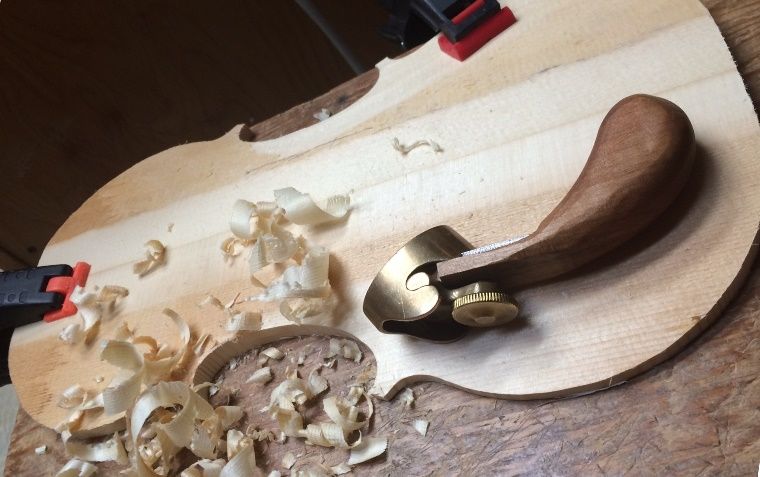
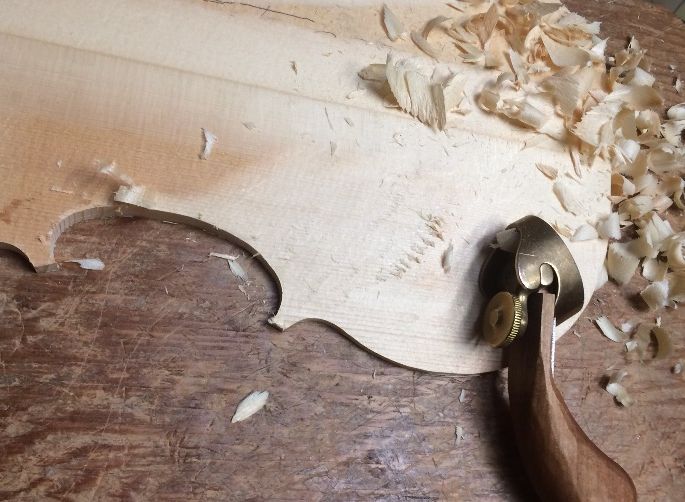
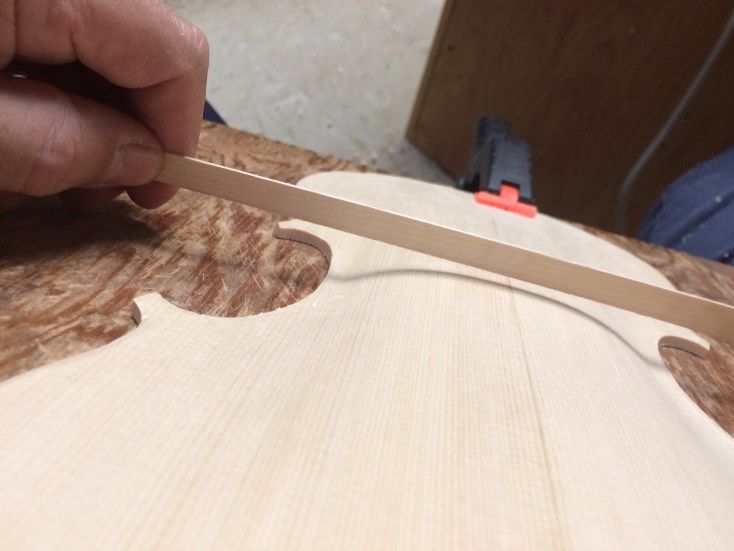
Finally, I use sharp scrapers to renove any lines or dents left by the planes, and narrow bamds of shadow to check the actual cross-sectional shape of the archings. I may still make later improvements, as I add the f-holes and the bass-bar, and, of course, after I install the purfling. But the archings of the two top plates are very nearly complete, so, the next time I post, it will be about f-holes.
So, here are the two plates, ready for f-hole incision, before being carved from the inside to be exactly as thick as I require. Other than the F-holes, bass-bars and purfling they are nearly complete. 🙂
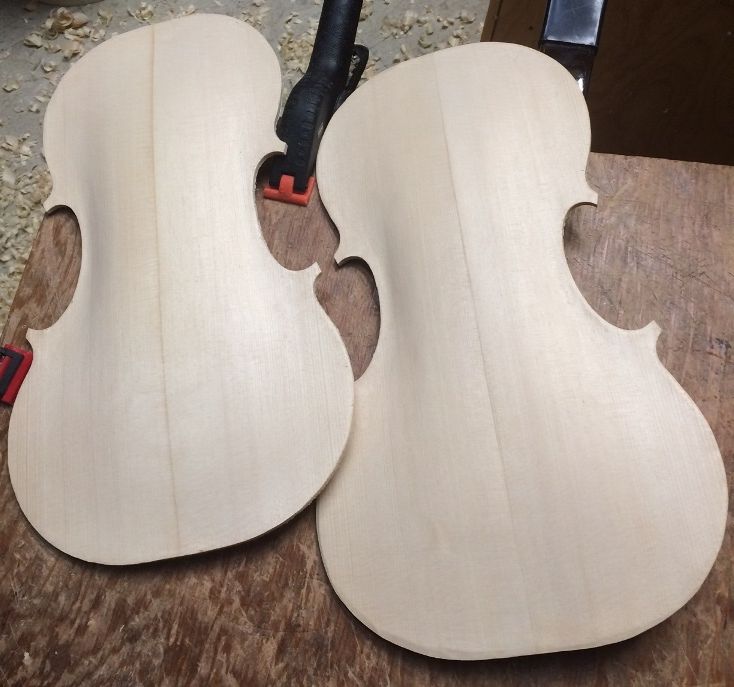
I will try to keep going on photos.
Thanks for looking

 Follow
Follow

